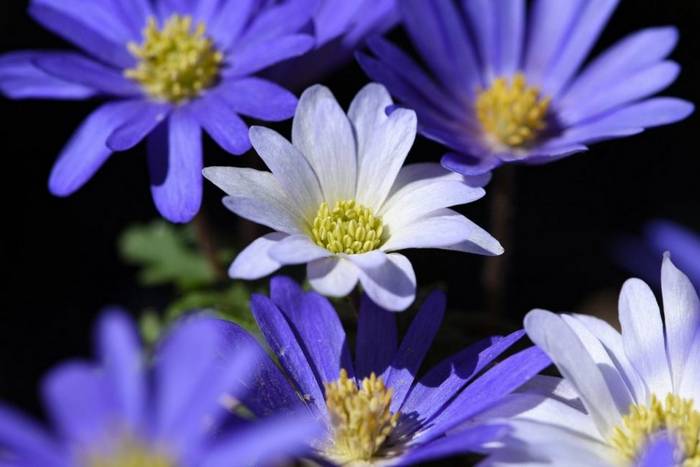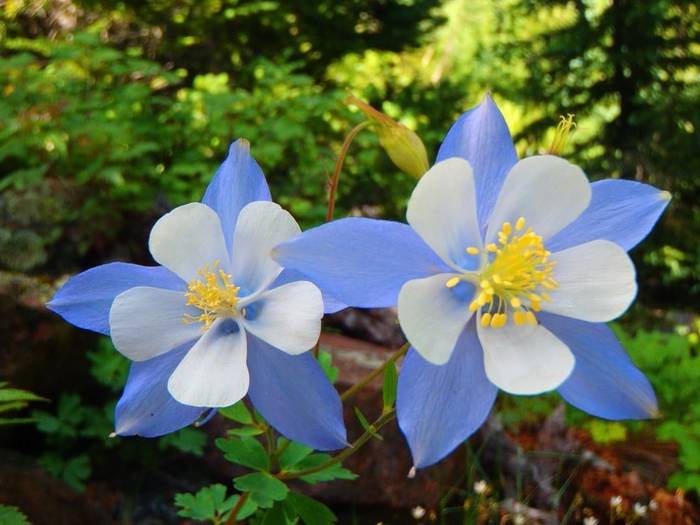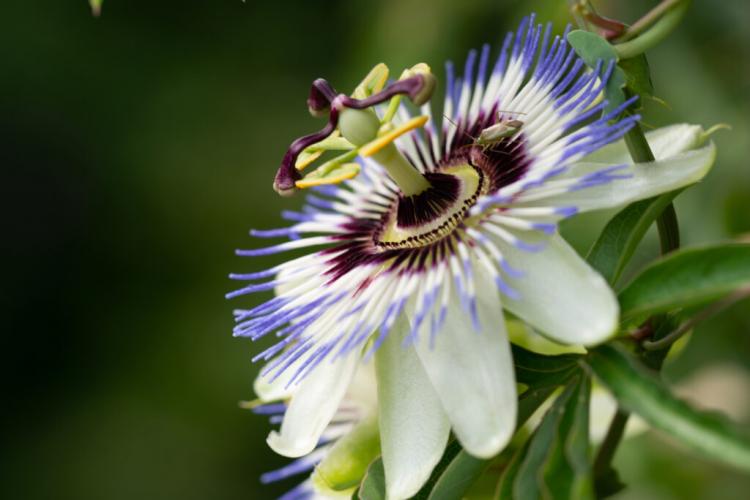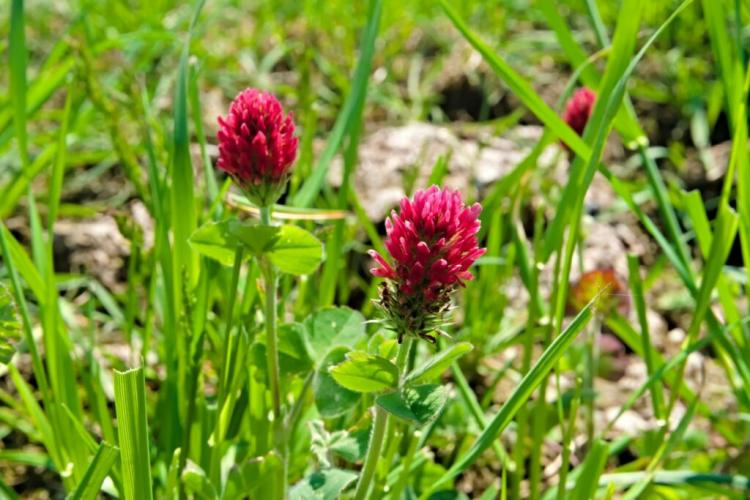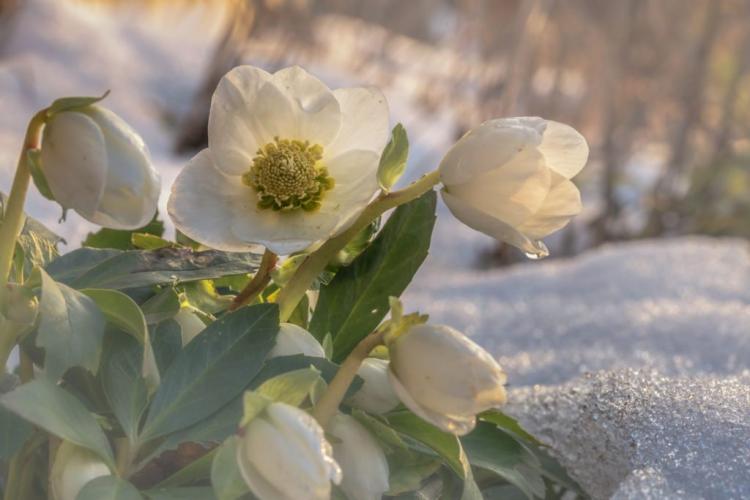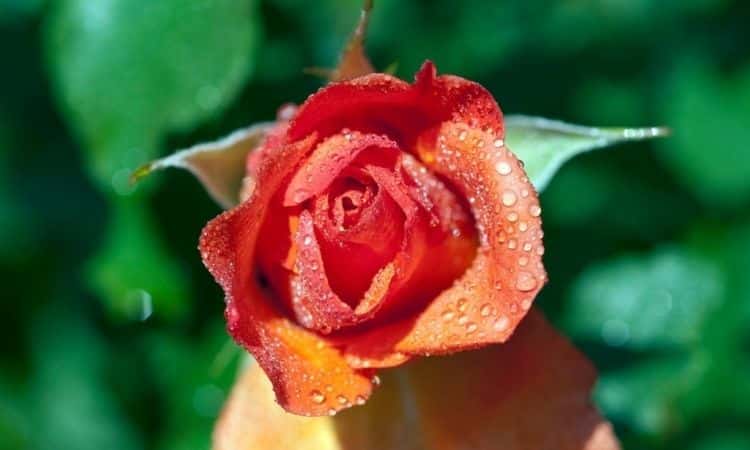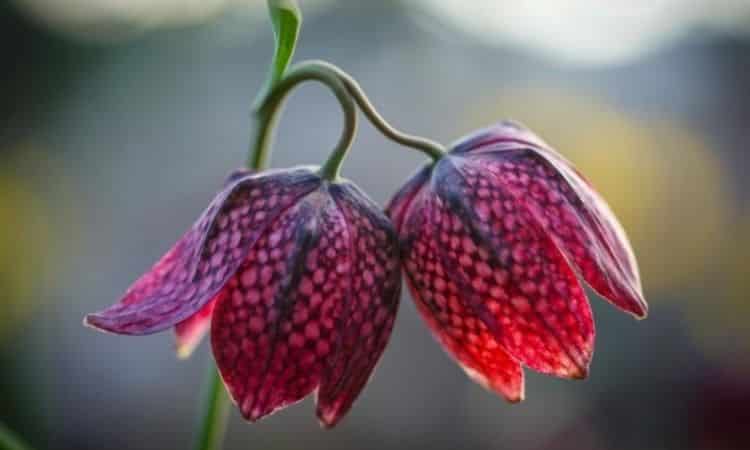Top 60 Blue Flowers For Your Home And Garden
Shades of blue symbolize infinity and spaciousness. This color calms and invigorates, brings a sense of coolness, and visually moves objects away. This property of the blue palette allows you to give the landscape a sense of spaciousness. We’ve made a selection of popular indoor and garden colors of blue.
Indoor plants
Table of Contents
On our windowsills plants with flowers of pure blue color are not very often found, because, in nature, such a color is not too common.
For those who like a cold range of shades, we suggest paying attention to beautifully blooming room flowers.
Senpolia (African violet)
The home of the senpolia is tropical Africa. The low herbaceous plant forms a rosette of leaves, above which flower stalks with simple or terry flowers rise. The abundant flowering can be observed in the second year of growth. African violet does not like drafts and tobacco smoke, blooms well in artificial light.
Browallia
This picturesque annual is usually grown on windowsills and balconies. A beautiful flower from South America looks wonderful in pots, vases, and hanging casseroles. Browallia grows up to 30-45 cm depending on the species and conditions. As long as it is well protected from cold winds and draughts it will thrive.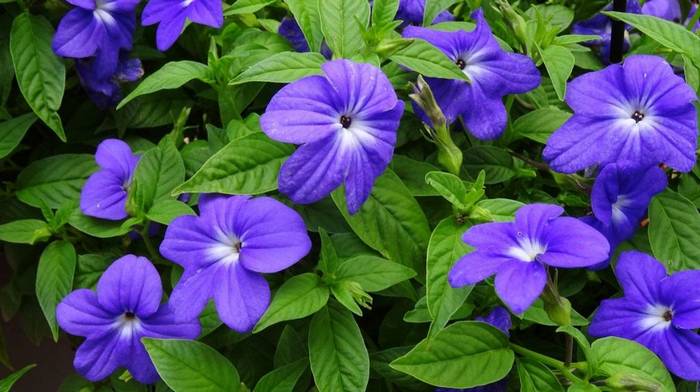
Streptocarpus plant
Under natural climatic conditions, this herbaceous plant lives in the African subtropics. Its leaves are arranged in a rosette and its bell-shaped flowers grow on flower stalks up to 25 cm long. In culture, streptocarpus is very unpretentious, propagated by leaf cuttings. With proper care, it blooms from early spring to mid-autumn.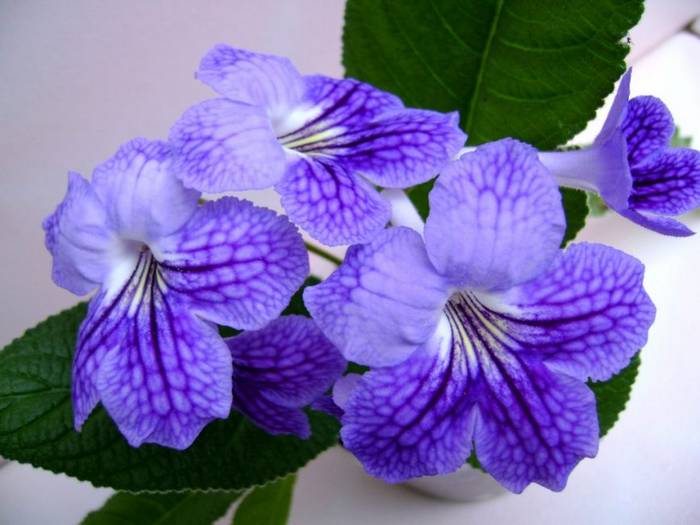
Thunbergia grandiflora
This evergreen liana is grown as an indoor ampelous plant. It prefers diffused light and works best in a southern window with mandatory shading from the bright sun. Propagate thunbergia in spring and summer by stem cuttings. The plant can be used for vertical gardening. Weak shoots should be removed.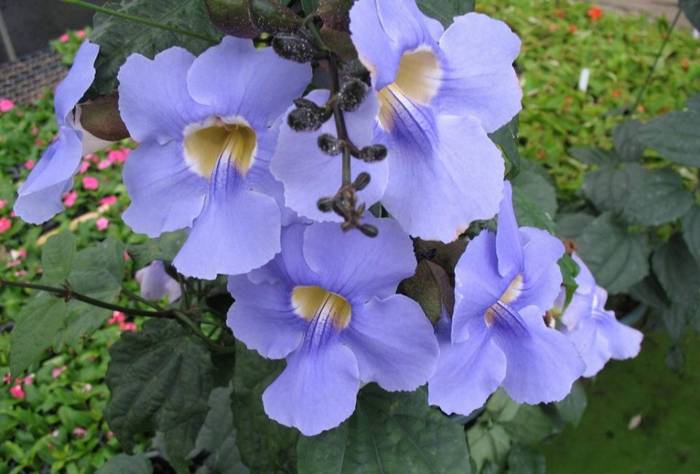
Plumbago
Homeland of this evergreen plant – the subtropics of South Africa. The optimum temperature for its cultivation is 17-24 degrees, and the winter temperature should not be lower than 15 degrees. The light-loving Plumbago does well on the windowsills of southern windows. Propagated by seeds and cuttings.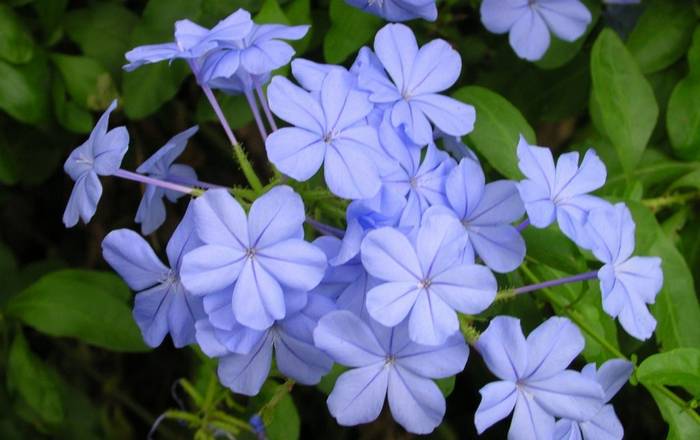
Annual plants
Due to a wide variety of forms of flowers and inflorescences and abundant flowering annual plants occupy one of the leading places in the decorative design of plots. Annuals are grown both through seedlings and by sowing seeds in the ground, which significantly reduces costs and simplifies their breeding. Most annual flowers have a short development cycle and complete it in one growing season. During this time, they have time to flower and give seeds. Annuals multiply rapidly, bloom for a long time, and are characterized by bright colors. Among them, there are quite a few plants with blue-colored flowers.
Cornflower
Rather an unpretentious plant with pinnate-cut leaves grows from 20 to 90 cm tall. Blossoms from July to September prefers dry sunny places, do not like prolonged overwatering. Propagated by bush division and seeds.
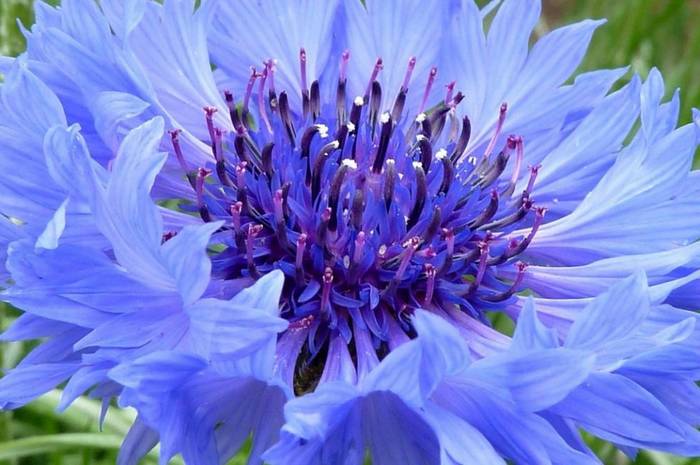
Nemophila (American Forget-me-not)
A plant with pubescent, strongly branched stems and broad-bell-shaped flowers. Blossoms profusely but not for long. Nemophila is a fairly unpretentious plant. It is moisture-loving and has no special requirements for heat. Shade tolerant prefers loose, slightly alkaline soils. Used as a groundcover plant.
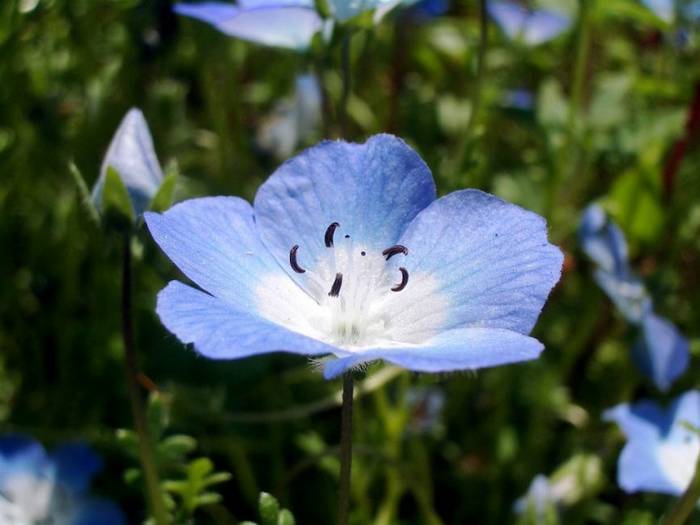
Heliotrope
Heliotrope is cultivated as an annual plant. It is a small shrub 60 cm tall with a branched stem. The small aromatic flowers are in shield-like inflorescences, up to 15 cm in diameter. Heliotrope blooms from June until frost. A characteristic feature of this plant is its ability to turn toward the light source. The cut inflorescences can be dried in the penumbra for winter bouquets, which retain their decorativeness for up to 5 years.
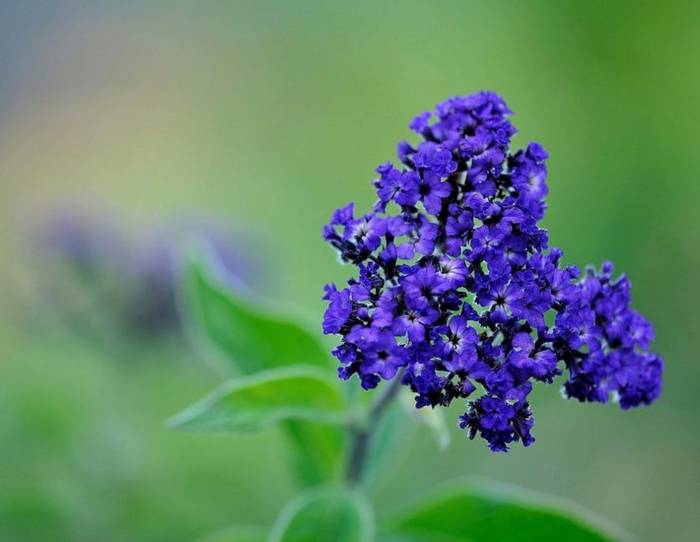
Nigella (Damascus nigella)
Annual with upright strongly branched stems up to 60 cm high and trailing leaves. Flowers up to 4 cm in diameter can be simple and macro. This undemanding plant blooms in June-July. Nigella is a heliophilous and cold-resistant plant. It is propagated by seeds, which are sown in April in the open ground.
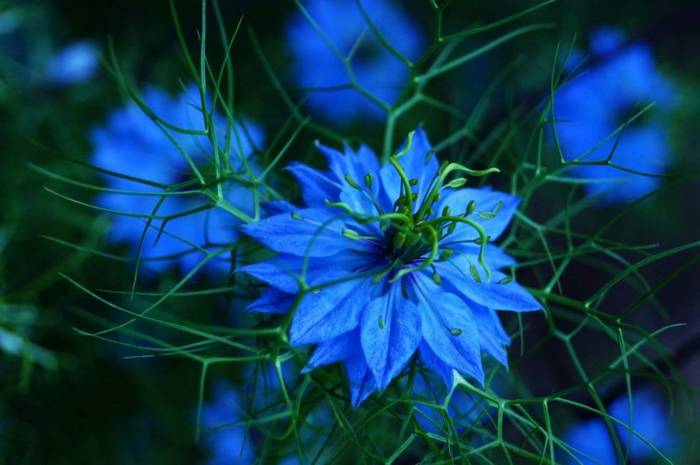
Hipomea
Hipomea is a fast-growing creeper, which reaches a height of 3-4 meters. It has pointed, heart-shaped leaves and funnel-shaped flowers that are 4-6 cm in diameter and cover-up when it’s cloudy or at night. Hipomea blooms from June until frost. Propagated by sowing seeds in the open ground. It prefers sunny sites. Needs support and is used for landscaping arbors, balconies, fences, and walls.
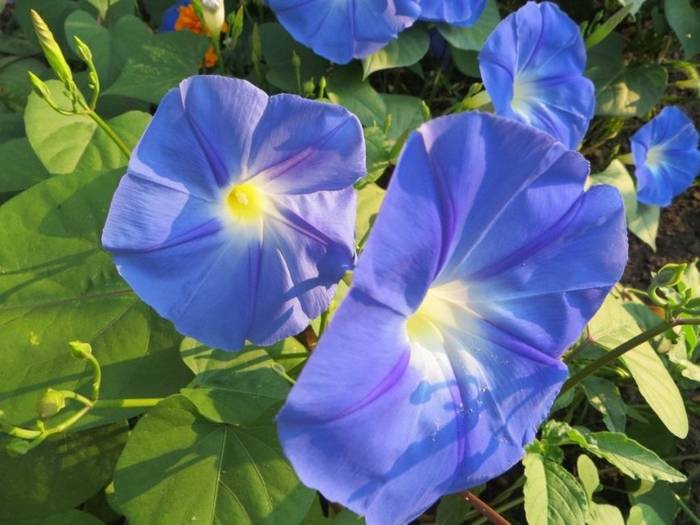
Anagallis
The common field plant was not very popular until breeders introduced varieties with blue flowers and creeping shoots that densely cover the soil surface. Anagallis reaches a height of 20 cm and does not tolerate overwatering – because of this its roots are affected by rot. It can tolerate prolonged drought. The plant is propagated by seeds, which are sown in April directly into the open ground. Mass formation of flowers occurs in bright sunlight.

Lobelia
An indispensable plant for creating carpet compositions, low borders, and landscaping stony areas. Lobelia is a perennial but is used as an annual. Its thin stems reach 10-15 cm in height. It forms compact dense bushes and flowers from June till frost. Propagated by sowing seeds in greenhouses in February-March, and seedlings are planted in the open ground in May.

Ageratum
This compact plant grows 20-35 cm tall and blooms in small flowers in an umbrella or globular inflorescences. Flowering lasts from June until frost. Flowered inflorescences do not spoil the decorative appearance of the flowers. Ageratum is propagated by seeds and cuttings. It is used for decorating flower gardens.
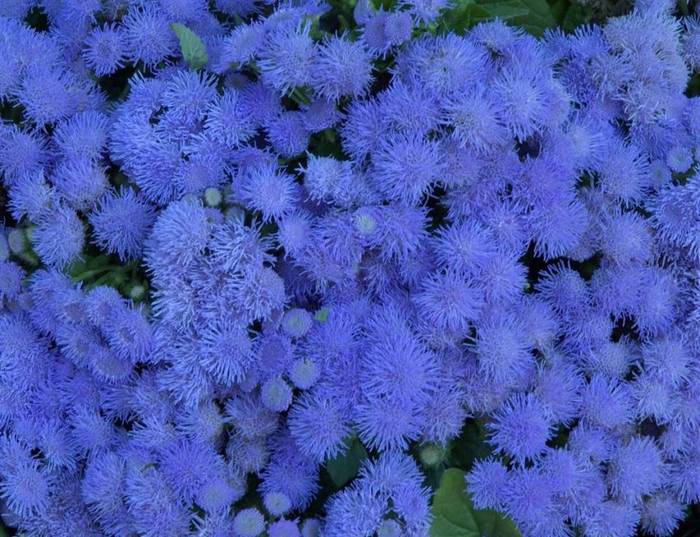
Nemesis
This perennial native to South Africa is grown as a summer plant and used to decorate borders and stony areas. Nemesia forms a 25-30 cm tall mat that flowers from June to August. Propagated by sowing seeds in greenhouses in February-March, and seedlings are planted in the open ground in May.
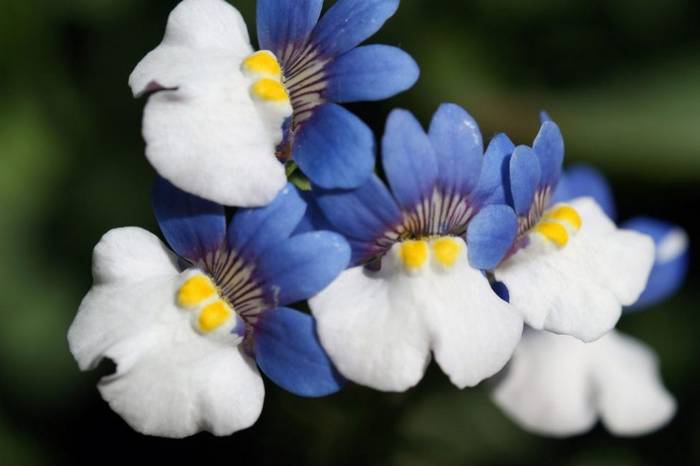
Petunia
Petunia is a 25-50 cm tall plant with climbing stems and funnel-shaped flowers. It is distinguished by a magnificent and long flowering time. Propagated by seed sowing in greenhouses or outdoors. Petunia is widely used for planting in flowerbeds, squares, terraces, and balconies. The plant can be grown in containers, decorative vases, and cachepots.

Aster
Annual species of asters differ in variety in the shape of the bush, the structure of inflorescences, and flowers. They come in low, medium, and tall. The main stem of the plant is straight and quite strong. Aster plants are propagated by seeds only. Well-matured seeds can keep their germination for up to 3 years. For early flowering, asters seeds are sown in the greenhouse in mid-March.

Biennial plants with blue flowers
Biennials are plants that reach their decorative value in the second year of cultivation. Most such crops only form a leaf rosette in the first year. Some of them may bloom, but very weakly. In the second year, the plants will develop flowering shoots, bloom abundantly, and form seeds. Dicotyledons are propagated by sowing seeds in April-May, from which seedlings are grown and planted in a permanent place in August-September of the first year. Most of these plants are also capable of vegetative propagation.
You might so like: Rose Varieties: The 12 Most Beautiful Rose Classes At A Glance
Viola (pansies)
This low-growing herbaceous plant is widespread in Europe and Asia. Violas form compact shrubs that reach a height of 15 to 30 cm. The coloring of the leaves is intensely green. The flower has 5 petals. Small-flowered varieties have flower diameters of up to 4 cm and large-flowered varieties have diameters of 4 to 6 cm. There are giant varieties with flowers up to 10 cm in diameter and wavy edges of petals. Viola is propagated by seeds, but for some elite varieties, cuttings can be used.
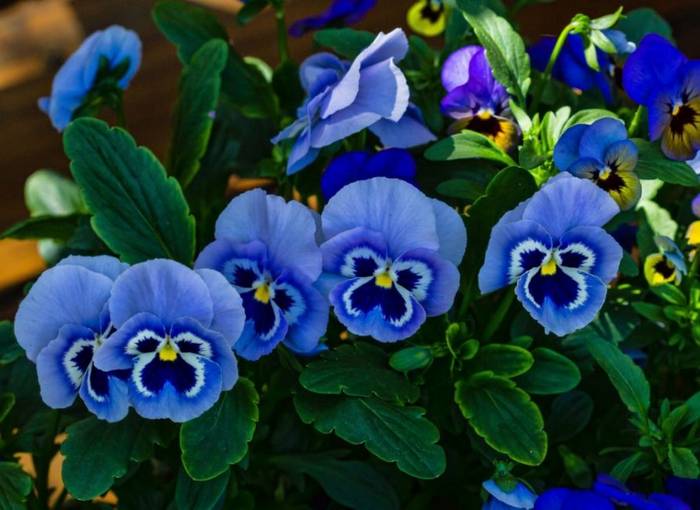
Forget-me-not
This bushy plant is 15 to 40 cm tall with small flowers in a helix-like inflorescence. Blossoms from May to mid-June, gradually losing their decorative effect. The forget-me-not is propagated by sowing seeds in the open ground. The plant is used to decorate flowerbeds and cabbages. It grows well in cool semi-shady places and prefers moist,well-fertilized soil. Flowering time is shortened in bright sun.
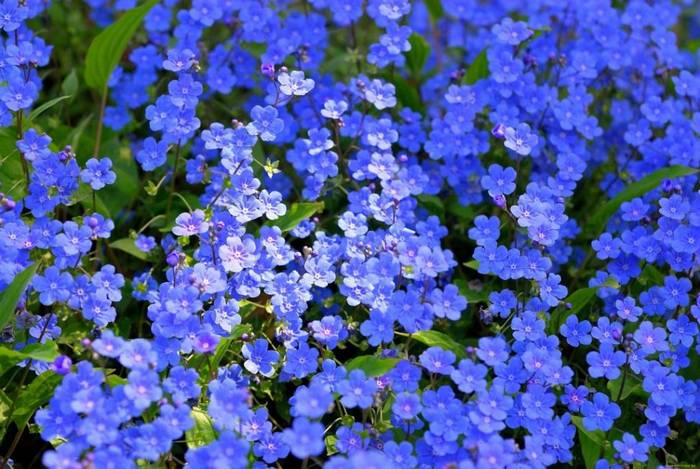
Perennial plants with blue flowers
Perennial flowering crops develop and bloom in the same location for several years. Most of them bloom in their second or third year. They are propagated both by seeds and bush division. These flowers are used in landscape design in single plantings and group compositions. Many of them overwinter in the open ground.
This plant also carries the names: eagle andVosburgg. It reaches a height of 40 to 80 cm with spreading shrubs and simple or pompous flowers with spurs. Aquilegia blooms in May-June. It grows well in any garden soil, both in lighted areas and in the penumbra. Mature plants do not withstand transplanting well. In one place aquilegia grows 3-5 years. Propagated mainly by seeds, less often by bush division.
Liverwort
This is a winter-hardy plant with leathery leaves gathered in a bunch. The flower stems can be up to 10 cm tall. The liverwort requires clayey soil with humus, frequent watering, and a shady or semi-shady location. The plant is propagated by dividing the bush or by seeds.
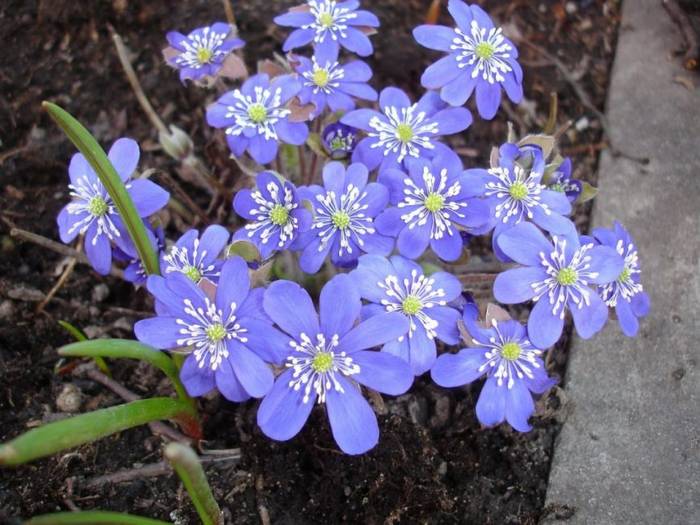
Flax (Línum usitatíssimum)
An undemanding perennial for dry, breathable soils and well-exposed sun. It grows to a height of 30-50 cm and blooms in May-July with blue flowers that sit on graceful stems. The narrow leaves have a blue-green hue.
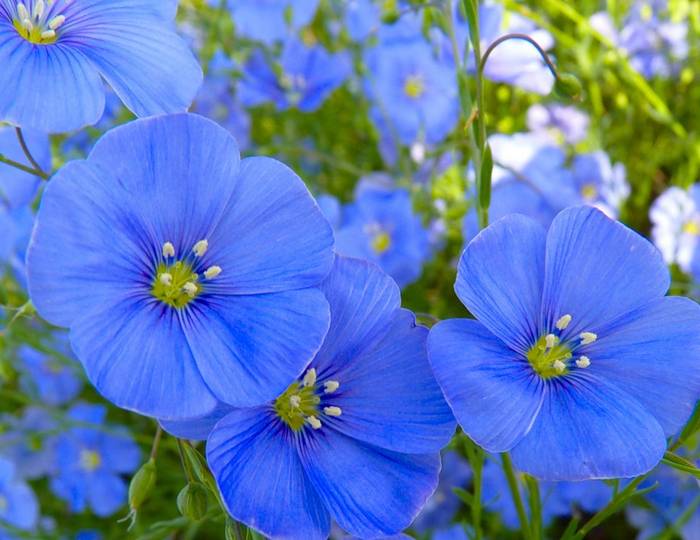
Primrose
Under natural climatic conditions, the primrose grows in the alpine zones and is classified as an herbaceous perennial. The plant prefers cool and diffused light without direct sunlight. Primrose is propagated by seeds, which are obtained after artificial pollination.
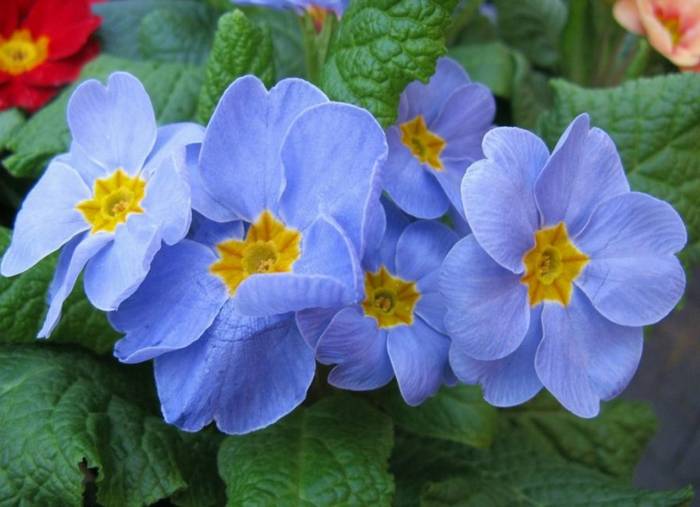
Echinops sphaerocephalus (Global Thistle)
The globular flowers of the mordowberry are attractive with a beautiful blue hue. The large, deeply dissected leaves are dark green on top and a lighter tone underneath. The plant is suitable for decorating landscape compositions and making dry bouquets.

Spiked phlox
This climbing perennial forms a solid cushion of flowers that can be a real decoration of the garden. The spiked phlox is a dwarf. It looks great in squares, borders, alpinaries, and along paths. Shilovid phlox is used in the design of flowerbeds as an independent plant, and combination with other floral ornamental crops.
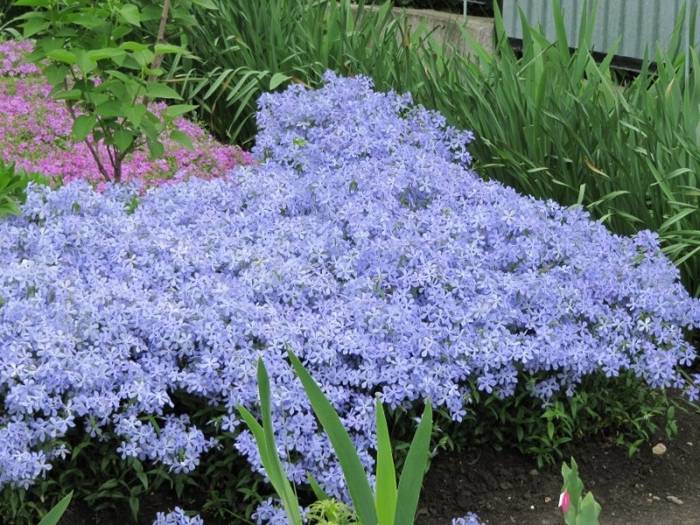
Aster alpine
This perennial plant has a relatively dense bush with a height of 20 to 60 cm and flowers arranged in baskets. It blooms in May-June and is propagated by splitting the shrub and herbaceous cuttings, less often by seeds. Alpine asters are popular in floral design because of their abundant blooms.
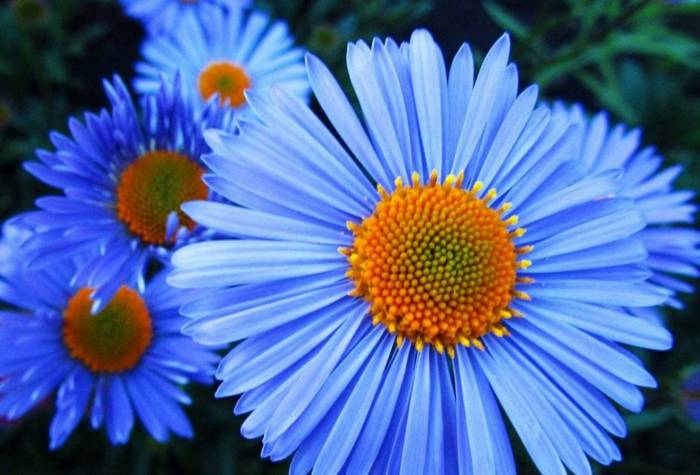
Delphinium
This is a tall plant that reaches a height of up to 2 m. Delphinium has slender stems with pyramidal inflorescences. The flowers are 3-7 cm in diameter and can be simple or tumbled. The flowers have spurs on the backside. This feature gave the plant its second name – spurge. Delphinium blooms in June-July, sometimes repeatedly in the fall. Flowers are odorless. The plant prefers calcareous and well-fertilized soils with humus. Easily propagated by sowing seeds, cuttings, and root division. Cut inflorescences remain ornamental in water for up to 10 days.
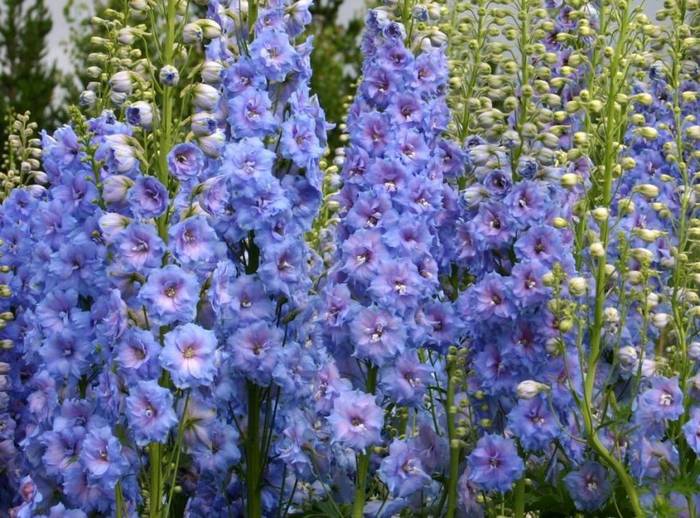
Globularia (globeflower)
Grassy perennial with long leaves in dense root rosettes and stems from 5 to 30 cm tall. Globularia is excellent for landscaping rockeries and alpine rock gardens. The flowers are fragrance-free.
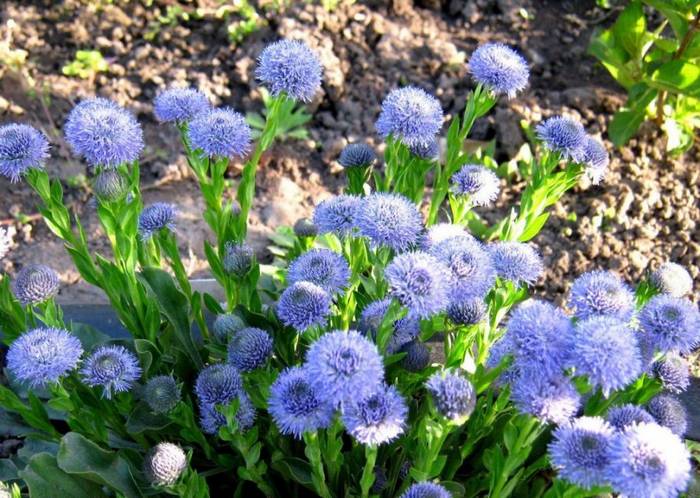
Bellflower
These unpretentious plants enjoy abundant flowering from spring to late fall. Their thin shoots are entirely covered with tender light-blue flowers so that even the leaves can’t be seen. Propagated by seed, division of the shrub, detached rhizomes, root scions, and green cuttings. Bellflowers are widely used in landscaping, can grow in pots, and look good in hanging cachepots.
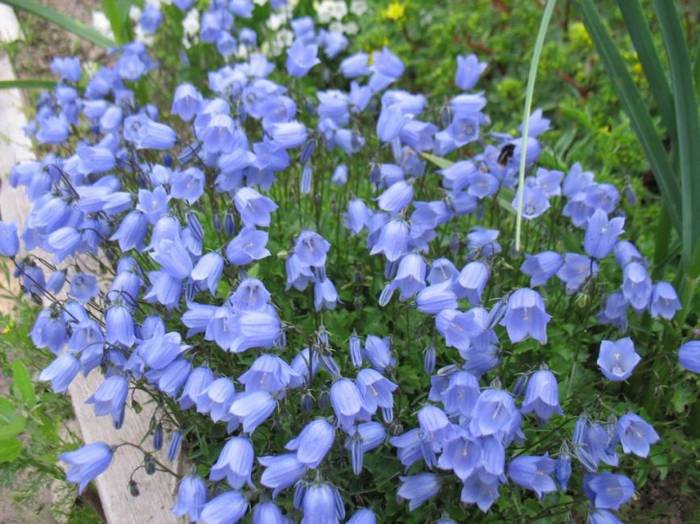
Agapanthus
This perennial herbaceous plant is native to southern Africa. The dense, scalloped leaves form a root rosette. During flowering, the agapanthus produces a long flower stalk that reaches a meter in height. Flowers are gathered in fairly large umbrella-like inflorescences. The plant is light-loving, in the shade may not bloom.

Lupine Plant
This tall plant forms a compact bush with large spike-like inflorescences. Blooms abundantly in June. Propagated by seed, stem cuttings, and bush division. Lupine is a fairly winter-hardy and drought-resistant plant that prefers well-lit areas. Looks great in both single plantings and group landscape compositions.
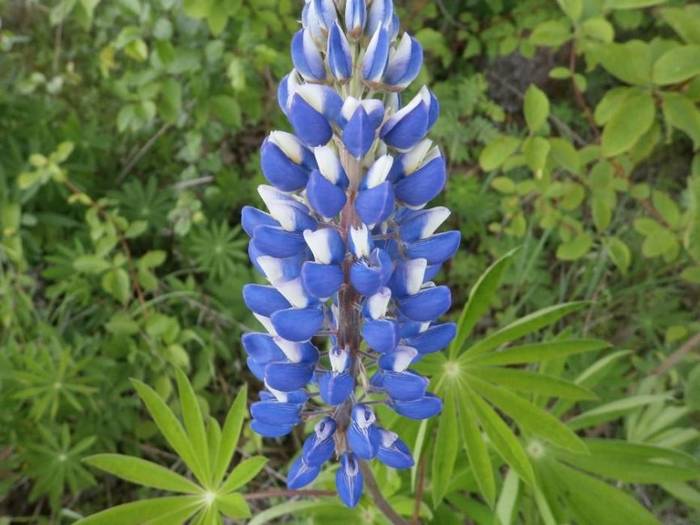
Meconopsis
This perennial is also called Himalayan or Tibetan poppy. It is characterized by an unusual blue color of flowers. Meconopsis is native to the uplands of India, China, Burma, Bhutan, and Nepal, but it has long since spread to Europe. The genus has more than four dozen species, including miniature flowers up to 15 cm tall and powerful two-meter tall plants.
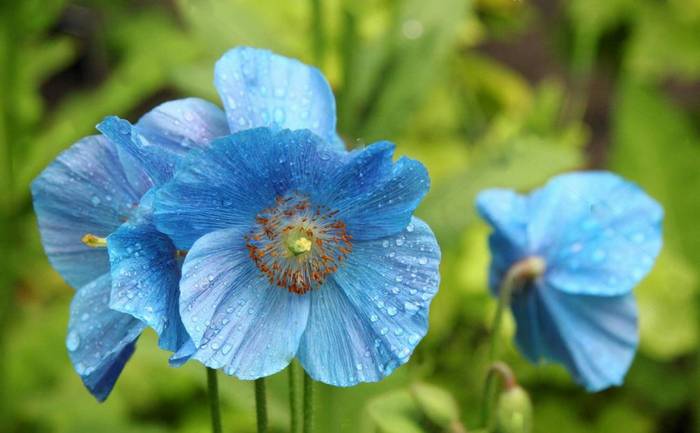
Geraniums
The geranium species includes several beautifully flowering varieties. The most fragrant of these is the Himalayan or large-flowered geranium. Its height is 50 cm. The geranium blooms from May to June and feels most comfortable in the penumbra. You may also like Fertilizing Geraniums.

Iris
The iris flower has six petals arranged in two circles: three on the outside and three on the inside. The outer petals are bent down and the inner petals are raised up and often clasped together, making the flower peculiar. Early-blooming irises bloom in the first half of May and late-blooming ones in July. The most common method of propagation is vegetative. Plants are undemanding to soil fertilize but grow better on cultivated soils.

Veronica
A 30-60 cm tall plant with glossy, leathery, lanceolate leaves. Small blue flowers are in dense pyramidal inflorescences. Veronica blooms in May and is propagated by sowing seeds in the fall as well as by splitting in the spring or fall.

Blue cranberry
A 60-70 cm tall plant with pinnately dissected leaves. Its flowers are in apical inflorescences. Blossoms in June-July, propagated by bush division and seeds. Blueberry prefers fertile garden soils with an admixture of leafy humus.

Kermek (statice)
This attractive plant is used both to decorate flowerbeds and to make bouquets. Its densely pubescent stems grow to 80 cm and its flowers are many colors including blue. Statice is undemanding to water and feed.

Scabiosa
This 50-80 cm tall plant with oblong leaves in a root rosette. It blooms from July until frost and grows well in humus-fertilized soil. Prefers open sunny sites, propagated by bush division and seeds.
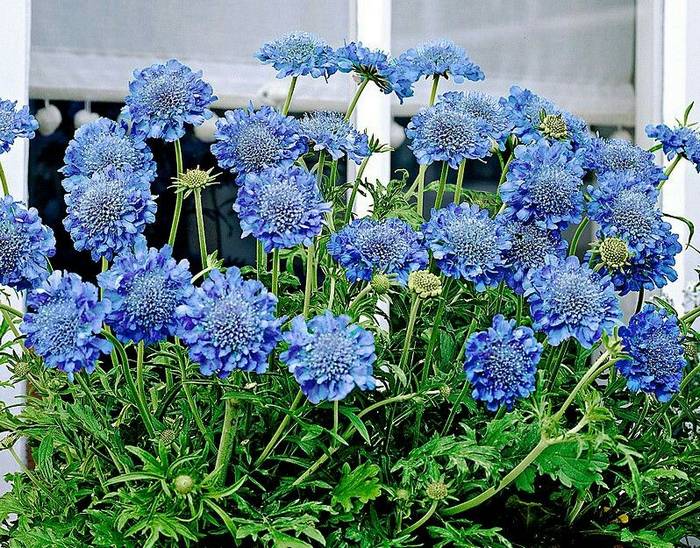
Brunnera
Grassy perennial with large root leaves and small blue flowers in loose inflorescences. Propagated by seed and division of rhizomes in early spring or fall. Brunnera is poorly tolerant of the lack of moisture. The plant is light-loving but can grow in a little shade as well.
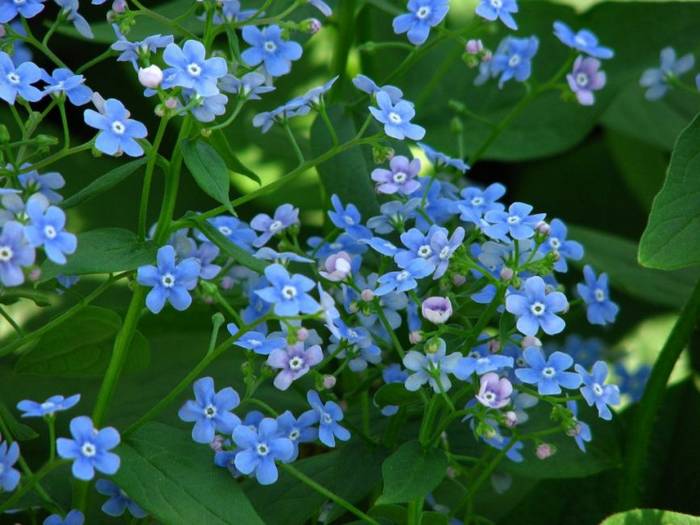
Elderberry creeping
There are many varieties of this perennial plant. It needs light shade, in which the oleoresin feels comfortable, produces numerous offspring, and forms a dense carpet thanks to them.

Periwinkle
This slow-growing evergreen plant with dense leathery leaves and large flowers forms a carpet up to 10-15 cm in height. Periwinkle is mainly grown as an ornamental groundcover plant. It is undemanding to the conditions of growth: it can tolerate both strong shading and bright sun, although it prefers shady and semi-shady areas.

Erigeron (small-leaved flowering plant)
This plant is 50-80 cm tall with lanceolate leaves gathered into a root rosette. The flowers form regular shields and bloom in July and August. Erigeron is undemanding to the soil but prefers a sunny location. It is propagated by dividing the bush and sowing seeds. It blooms in the second year. Used in stony and alpine gardens, mixed borders, and borders.

Bluegrass (Eryngium)
This beautiful plant prefers hot areas and dry sandy soils. Blueheads captivate with elegance: the blue flower heads are decorated with dissected upper silvery-gray leaves. The plant reaches 60-80 cm in height and flowers in June-August.

Platycodon (large-flowered bellflower)
A 40-80 cm tall plant with oval-elliptical toothed leaves with sharp tips. Flowers are shortened bell-shaped, 5-7 cm in diameter, settled on the tops of shoots in paniculate inflorescences. Platycodon is responsive to fertilizers, preferring clayey, slightly acidic soils with sufficient humus and a touch of sand. Propagated by sowing seeds in autumn. After sowing, blooms in the third year.
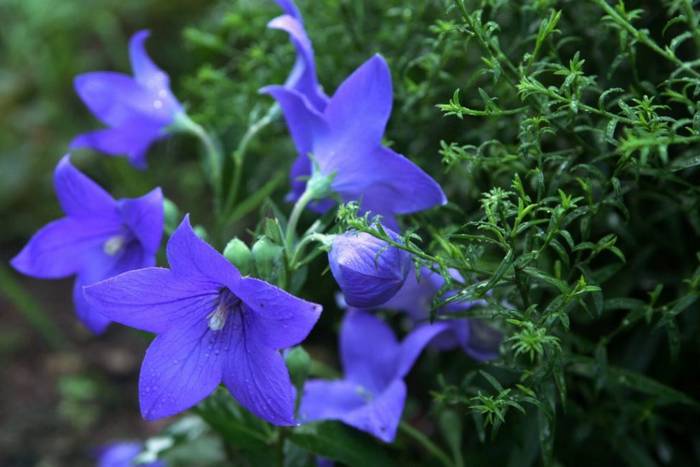
Bulb plants
Bulbous outdoor perennials are distinguished by the earliest flowering of all plants. Their underground part is a bulb, in which nutrients are accumulated and from which the flowering stem develops. These plants are best planted in small clumps between the groundcover perennials. All bulbous flowers fade after flowering, their foliage withers and make room for neighboring plants.
You might so like: Maintaining Physalis: Tips for pruning, fertilizing, and cutting
Iridodictium or reticulate iris
A hardy and light-loving perennial that looks very similar to irises. The color of the flowers is mostly limited to blue and blue shades. The plant can grow on poor soils. It is propagated by daughter bulbs. Iridodictium grows in one place for up to 7 years. It is used to decorate flowerbeds, stony gardens, and alpine slopes. Bulbs can be left in the open ground for the winter, but it is better to dig them out annually.
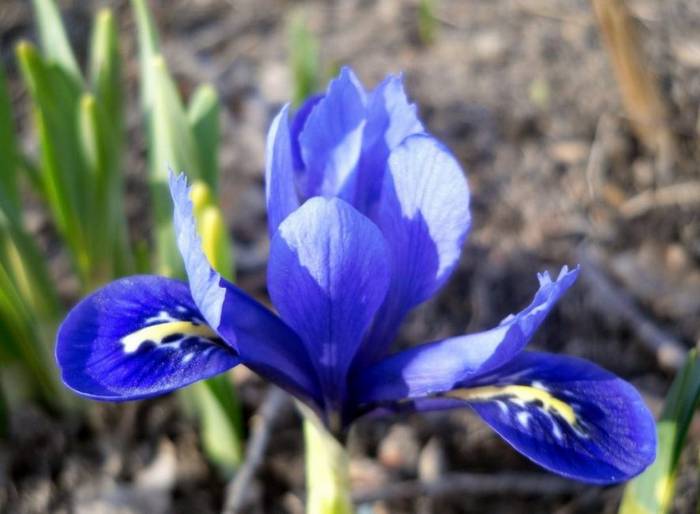
Muscari
A small bulbous plant also called mouse hyacinth, is 15 to 25 cm tall. Muscari flower earlier than many other plants – in April-May. They do well in sunny places such as alpinaries. In addition to beauty and grace muskrats attract by their unpretentiousness. They are very adaptable to different conditions.
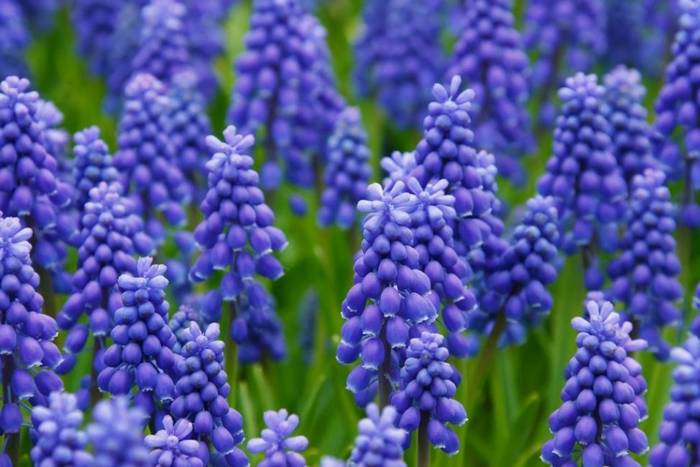
Allium (ornamental onion)
An unpretentious perennial with root leaves and globular inflorescences on tall peduncles. Can grow to a height of 30 to 140 cm depending on the variety. Allium is hardy and light-loving. It is a drought-resistant plant that doesn’t like excessive moisture. Propagated by seeds and baby bulbs, it often gives self-sowing. It blooms on the second year after planting. It is used in the design of stony gardens, alpine mounts, as well as for cuttings and dry bouquets. Even after the end of flowering, during the ripening of the seeds, dry heads of ornamental onions look very attractive.
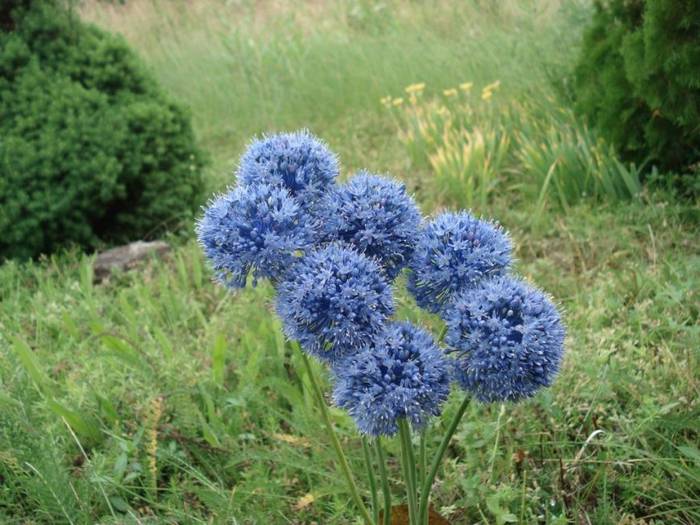
Anemone
Anemone refers to corms. Its underground part is a small nodule, which is dug out in the fall and stored indoors until spring. Anemone flowers in April/May prefer a sunny location but can grow and bloom in the penumbra. The soil should be moderately moist and well-fertilized with old humus.
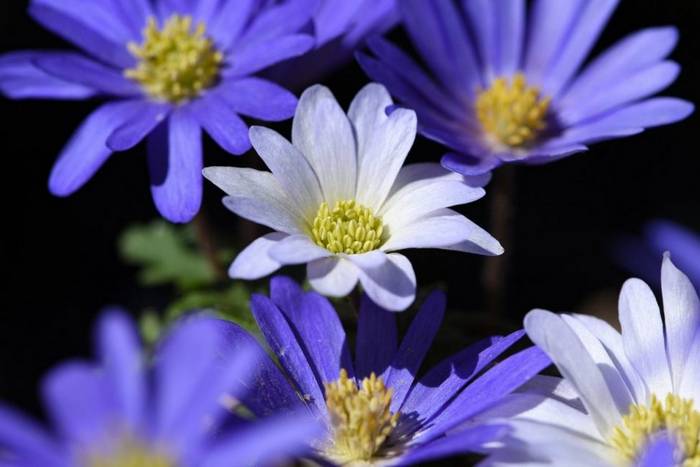
Scylla
This flower is also referred to as the blue hellebore or blue snowdrop. Scylla is a perennial bulbous plant, has a height of up to 10-15 cm, and blooms as soon as the snow melts. It is propagated by baby bulbs and seeds. Scylla grows well in one place for 4-5 years.
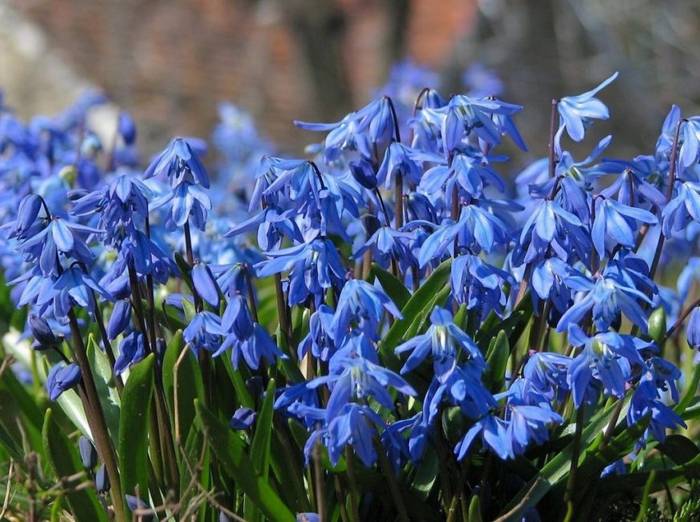
Hyacinth
A small plant with fragrant simple or pompous flowers in a cluster of inflorescences up to 30 cm long. Blossoms early in April or May. Propagated by bulbous offspring, it prefers open sunny places. Group plantings of hyacinths look especially beautiful against the background of a smooth tidy lawn.

Chionodoxa
This plant is one of the first to bloom, as soon as the snow has descended. Its height is 10-15 cm. Its flowers are arranged in brush-like inflorescences. Chionodoxa grows well in the sun and semi-shade, but blooms earlier in the sun. Propagated by seeds and baby bulbs.
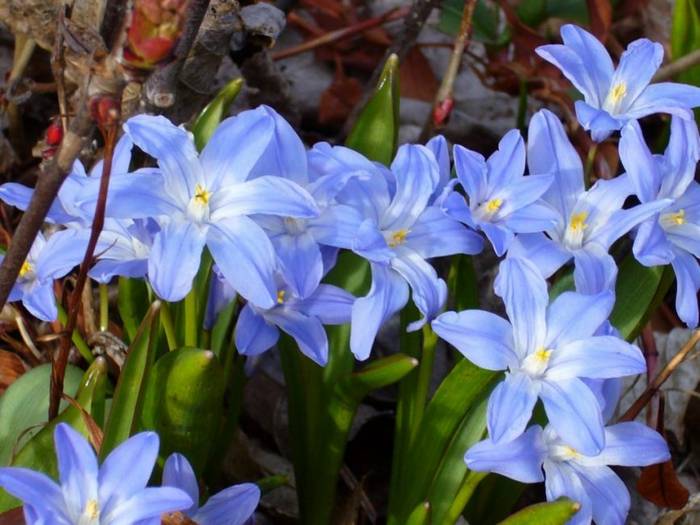
Puschkinia scilloides
This miniature ornamental plant is cultivated in group plantings in alpinaries. In its wild form, Puschkinia can be found on mountain meadows and stony slopes of the Caucasus and Asian countries. The plant prefers well-drained soils and open sunny places. Propagated by bulbs, offspring, and seeds. Can grow in one place for 5-7 years.
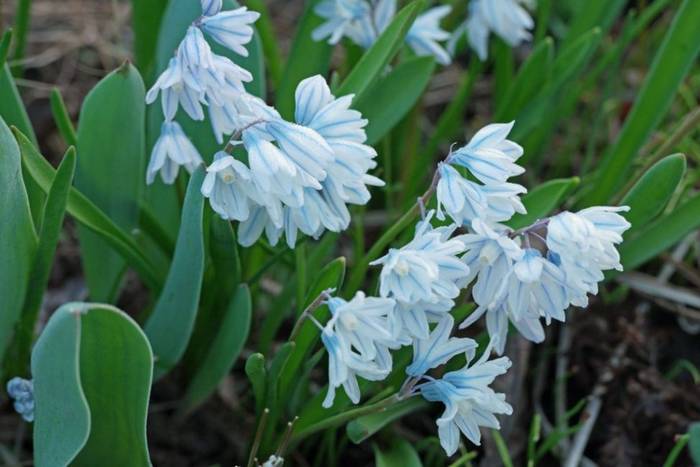
Ornamental shrubs
This group of plants decorates the garden from early spring to late fall. The root system of shrubs penetrates deep into the thickness of the soil, and the ground part can reach a height of several meters. As a rule, most shrubs are fairly winter-hardy.
Clematis
The shoots of this ornamental liana reach 5-7 m in length. Flower buds are laid on the shoots of the current year. This shrub is undemanding to the soil. It grows well in sunny open places, protected from the wind, and blooms abundantly. Clematis is propagated by grafts, cuttings, bush division, and seeds. The plant needs to be covered in winter. Flowers do not smell.

Hydrangea
This is a deciduous large-leaved ornamental shrub. Its flowers are gathered in large inflorescences. Hydrangea is picky about fertilizers and moisture of the soil, it is light-loving but can grow in the penumbra. The plant is propagated by seeds, offshoots, scions, division of bushes, cuttings, and grafting. This lushly blooming shrub looks great in both single plantings and group compositions.

Lilac
One of the most popular flowering shrubs. Lilacs are widely distributed in gardens and parks. The plant is valued for its long beautiful blooming and decorative appearance of bushes. The blooming flowers fill the whole garden with fragrance. Lilacs are frost hardy and winter hardy with flower buds rarely freeze. Garden forms are propagated only vegetatively.

Ceratostigma
This deciduous shrub is highly decorative. In summer and early autumn, it blooms with blue flowers that resemble phloxes in their shape. In the fall, the leaves of the plant change their green hue to bright red, which gives it an even more attractive appearance.
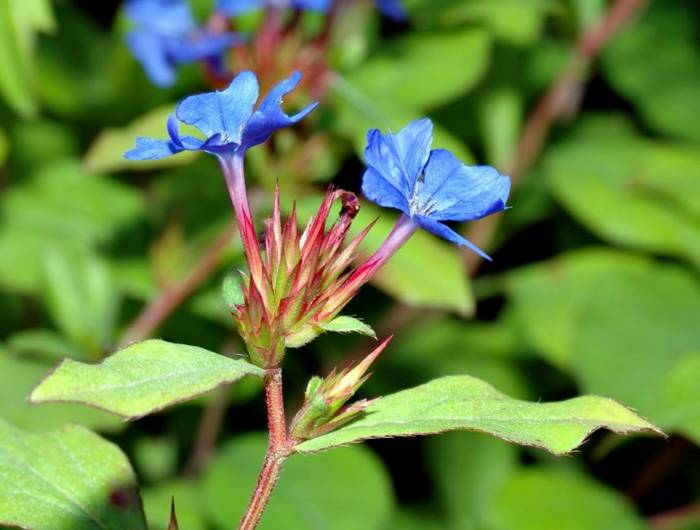
Ceanothus (redbud)
This shrub is native to North America. The name “ceanothus” comes from a Latin word that means “blue.” The second name “redroot” indicates that the roots of this plant contain a red dye. The shrub blooms and bears fruit in European territory, but can freeze in harsh winters.

